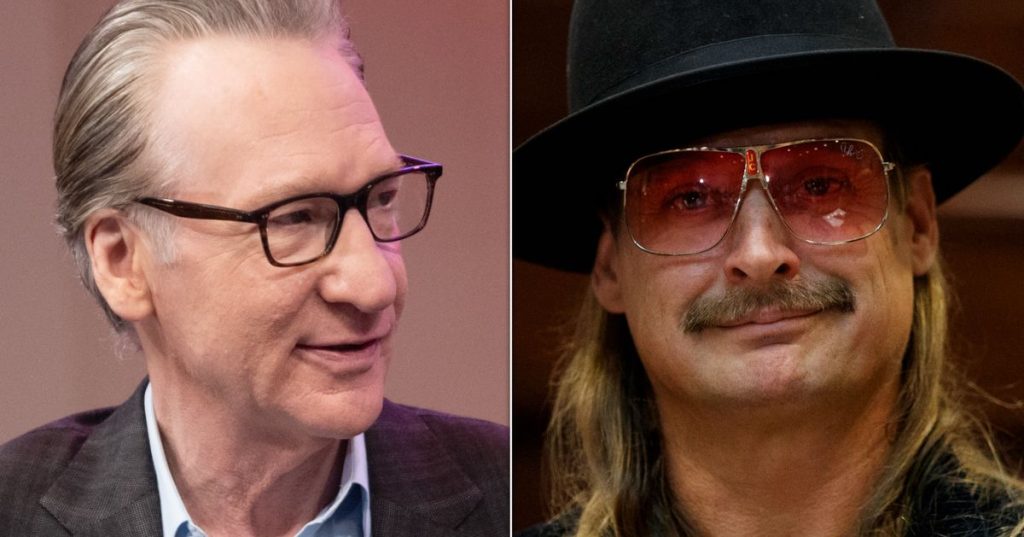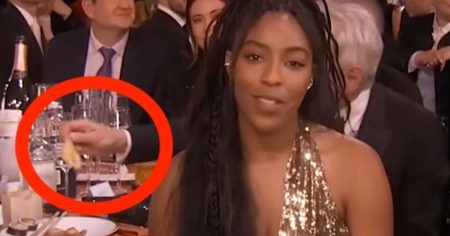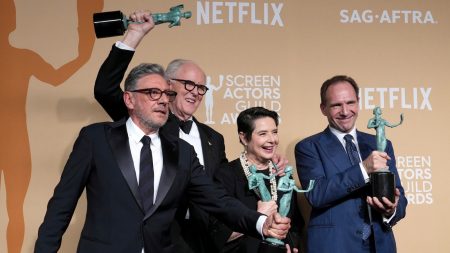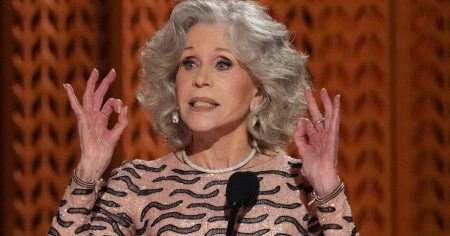A Surprising Moment of Respect: Kid Rock Praises Kendrick Lamar’s Super Bowl Halftime Show
In a surprising twist on HBO’s Real Time with Bill Maher, conservative musician Kid Rock expressed admiration for rapper Kendrick Lamar’s controversial Super Bowl halftime performance. Lamar’s show, which featured predominantly Black performers and a bold, unapologetic display of artistry, had drawn criticism from right-wing pundits, with some even labeling it “Satanic.” However, Kid Rock, known for his outspoken support of Donald Trump and his own provocative persona, offered a different perspective during his appearance on the show. Despite admitting that the performance wasn’t necessarily his personal taste, Rock praised Lamar’s authenticity and commitment to his art, comparing it to his own approach to his career.
“I’m like, this kid pretty much came out figuratively with both middle fingers in the air, doing what he does for the people who love what he does, unapologetically,” Rock told Maher. “And I don’t think he gives a frog’s fat ass what anyone thinks about it.” Maher, who seemed to expect a more divisive reaction from the conservative rocker, responded with a chuckle, saying, “Yeah, OK! There we go, common ground.” This exchange highlighted an unexpected overlap in their appreciation for unapologetic artistry, even if their personal styles and ideologies differ.
Kid Rock’s Hip-Hop Roots and Understanding of Black Culture
Kid Rock’s praise for Lamar might have come as a shock to those who only know him as the pro-Trump rocker who once used a machine gun to destroy stacks of Bud Light after a transgender influencer endorsed the brand. However, Rock’s career began in the 1990s as a rapper, and he described himself as someone who deeply respects and understands hip-hop culture. “I grew up loving, emulating all things hip-hop,” Rock explained. “Breakdancing, DJing, graffiti, rapping, and so I understand the culture a little bit more than most. And when I say most, of course, I mean white people.” This background gave him a unique perspective on Lamar’s performance, allowing him to appreciate the artistic intent behind it, even if it wasn’t his personal cup of tea.
Rock’s comments also touched on the broader cultural context of the NFL’s halftime show. He pointed out that Lamar’s performance was part of a shift in the NFL’s approach to live music, which he attributed to the league’s hiring of Jay-Z as a “live music entertainment strategist.” Rock suggested that this move was part of the NFL’s efforts to push diversity, equity, and inclusion (DEI) initiatives, particularly after the backlash they faced for their handling of Colin Kaepernick’s protests against police brutality in 2016.
DEI and the Backlash Against Kendrick Lamar’s Performance
Kendrick Lamar’s halftime show, which celebrated Black culture and featured predominantly Black performers, was met with predictable outrage from some right-wing commentators. Many criticized the show for being exclusionary or even anti-white, with some going so far as to call it “Satanic.” Rock, however, took a more nuanced approach, acknowledging the show’s boldness while also critiquing what he saw as the NFL’s overemphasis on DEI initiatives.
Rock argued that Lamar’s performance was an example of DEI “blowing up” in the NFL. He claimed that the league, under Jay-Z’s influence, had become so focused on promoting diversity and inclusion that it had inadvertently created a situation where Lamar’s show felt “exclusive” rather than inclusive. “It’s all Black people, or people of color, speaking to his crowd in the hood. Black people. It was like, the most exclusive thing ever,” Rock said. Yet, despite his critique of the NFL’s approach, Rock couldn’t help but admire Lamar’s unapologetic delivery. “I’m like, ‘Fuck yeah, that’s awesome,’” he added. “I’m laughing my ass off.”
The Bridging of Cultural Divides
Kid Rock’s comments on Real Time revealed an interesting dynamic in American culture, where even deeply divided individuals can find common ground when it comes to artistry and authenticity. Rock’s reverence for Lamar’s boldness, despite their vastly different backgrounds and ideologies, spoke to the power of art to transcend cultural and political divides. At the same time, the backlash against Lamar’s performance highlighted the ongoing tensions in American society, where efforts to promote diversity and inclusion are often met with resistance and outrage.
Maher’s reaction to Rock’s comments—“Yeah, OK! There we go, common ground”—underscored the rare moment of agreement between two figures from very different worlds. While their exchange didn’t resolve the deeper cultural conflicts, it offered a glimmer of hope that even in these polarized times, there are still moments where people can come together to celebrate shared values, even if those values are expressed in very different ways.
The Broader Cultural Divide and the Role of Art
The debate over Kendrick Lamar’s halftime show reflects a larger cultural divide in America, where issues of race, identity, and representation continue to simmer just below the surface. On one side, there are those who see performances like Lamar’s as a celebration of diversity and a long-overdue recognition of Black culture’s influence on American society. On the other side, there are those who view such displays as alienating or exclusionary, symbols of a broader push for DEI that they see as unfair or divisive.
Kid Rock’s comments added another layer to this conversation, as he acknowledged both the boldness of Lamar’s performance and the potential pitfalls of the NFL’s approach to DEI. While he praised Lamar’s authenticity, he also critiqued the league for what he saw as an overemphasis on identity politics. His reaction highlighted the complexity of these issues, where even those who appreciate the artistry can feel alienated by the broader cultural messaging.
Conclusion: Art, Identity, and the Search for Common Ground
In the end, Kid Rock’s praise for Kendrick Lamar’s halftime show offered a rare moment of cultural connection in a deeply divided America. While their exchange didn’t resolve the tensions over DEI or the role of identity in art, it showed that even in the face of significant ideological differences, there is still room for appreciation and respect. As the conversation around art, identity,















